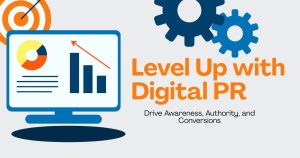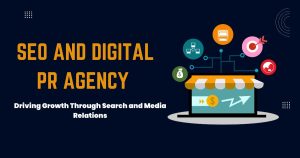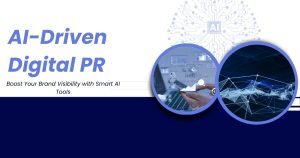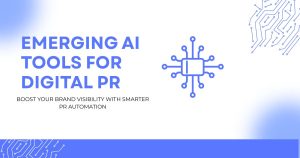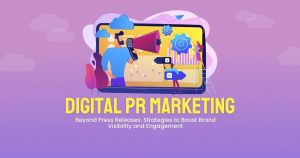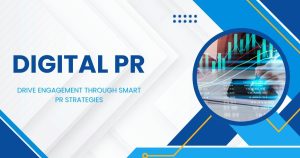Automotive Digital PR: Drive Your Brand to the Front Page
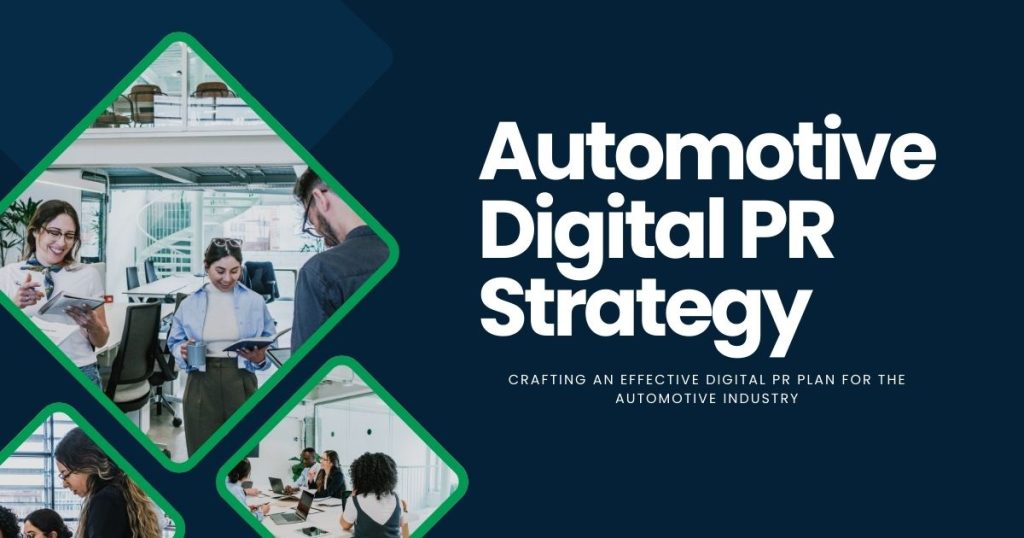
The automotive industry faces a unique challenge. Car buyers conduct extensive online research before making purchasing decisions, yet traditional marketing approaches often fall short of reaching these digital-first consumers. This is where automotive digital PR becomes essential.
Unlike conventional advertising that interrupts potential customers, automotive digital PR builds genuine relationships with journalists, influencers, and online communities. It creates authentic conversations around your brand, generates earned media coverage, and positions your company as a thought leader in an increasingly competitive marketplace.
Whether you’re launching a new vehicle model, announcing sustainable initiatives, or navigating industry disruption, strategic digital PR can amplify your message across the channels that matter most. This guide explores proven strategies, common pitfalls, and actionable tactics to elevate your automotive brand’s digital presence.
What Makes Automotive Digital PR Different
Automotive digital PR operates in a specialized ecosystem with distinct characteristics that set it apart from other industries. The stakes are inherently high—vehicle purchases represent significant financial commitments for consumers, making trust and credibility paramount.
The automotive industry also faces intense scrutiny around safety, environmental impact, and technological innovation. Every press release, social media post, or media interview carries the potential to influence public perception and regulatory attention. This creates both opportunities and risks for PR professionals working in the space.
Digital platforms have transformed how automotive stories spread. A single Tweet about a vehicle recall can reach millions within hours. Conversely, positive coverage of breakthrough technology or safety awards can generate substantial brand lift across multiple channels simultaneously.
Automotive journalists and influencers typically possess deep technical knowledge and maintain high editorial standards. They expect detailed specifications, access to subject matter experts, and opportunities for hands-on testing. Building relationships with these stakeholders requires a sophisticated approach that respects their expertise while providing genuine value.

Building Your Automotive Digital PR Strategy
Successful automotive digital PR begins with understanding your unique position in the market ecosystem. Are you an established manufacturer launching electric vehicles? A startup developing autonomous driving technology? A parts supplier serving multiple OEMs? Your strategic approach must align with your specific circumstances and objectives.
Start by mapping your key audiences across digital channels. Automotive enthusiasts congregate on specialized forums and YouTube channels. Fleet managers follow industry trade publications. Environmental advocates track sustainability news on LinkedIn and Twitter. Each audience requires tailored messaging and engagement strategies.
Content calendars should reflect both planned activities and reactive opportunities. Product launches, auto shows, and earnings announcements create predictable PR moments. However, the most impactful automotive digital PR often responds to breaking news, regulatory changes, or competitive developments in real-time.
Data and analytics form the foundation of effective automotive digital PR measurement. Track brand mentions across social platforms, monitor sentiment around key messages, and analyze share of voice compared to competitors. This intelligence informs strategy adjustments and demonstrates ROI to internal stakeholders.
Content That Drives Automotive Conversations
Automotive digital PR thrives on content that combines technical expertise with compelling storytelling. Engineers and designers possess fascinating insights about vehicle development, but these stories require careful translation for broader audiences.
Behind-the-scenes content performs exceptionally well in automotive contexts. Manufacturing processes, testing procedures, and design evolution create authentic narratives that journalists and consumers find engaging. Consider documenting the journey from concept sketch to production vehicle, highlighting the human expertise behind technological advancement.
Safety and innovation stories resonate across multiple audience segments. New crash test ratings, advanced driver assistance features, and connectivity capabilities generate natural media interest. The key lies in explaining complex technology through relatable benefits rather than technical specifications alone.
Sustainability initiatives increasingly drive automotive conversations. Electric vehicle development, carbon footprint reduction, and circular economy programs align with broader societal concerns while demonstrating corporate responsibility. These topics often attract coverage from both automotive and mainstream media outlets.
User-generated content amplifies authentic brand experiences. Customer stories, owner testimonials, and community spotlights provide social proof while reducing the promotional tone of brand-created content. Encourage customers to share their experiences across social platforms and incorporate their voices into broader PR campaigns.
Leveraging Digital Channels for Maximum Impact
Social media platforms each offer distinct advantages for automotive digital PR. LinkedIn excels for B2B communications, connecting with industry professionals, analysts, and business journalists. Share thought leadership content, company updates, and executive insights to build professional credibility.
Twitter facilitates real-time engagement during industry events, product announcements, and breaking news situations. Use the platform to participate in automotive conversations, share quick updates, and respond to customer inquiries or media requests promptly.
YouTube serves as a crucial channel for automotive content, particularly for vehicle reviews, manufacturing tours, and educational content. Partner with automotive YouTubers and create branded content that showcases your products in authentic, engaging formats.
Instagram and TikTok increasingly influence younger automotive consumers. Visual storytelling, behind-the-scenes content, and lifestyle-focused messaging perform well on these platforms. Consider partnering with automotive influencers who align with your brand values and target demographics.
Email marketing remains effective for nurturing journalist relationships and delivering exclusive content to key stakeholders. Develop segmented lists based on beat coverage, geographic location, and content preferences to ensure relevant communication.

Measuring Automotive Digital PR Success
Effective measurement combines traditional PR metrics with digital-specific analytics to provide comprehensive performance insights. Media impressions and share of voice indicate reach and competitive positioning, while sentiment analysis reveals how your brand is perceived across digital conversations.
Website traffic and engagement metrics demonstrate how PR activities drive business outcomes. Track referral traffic from media coverage, social media mentions, and influencer partnerships. Monitor time on site, page views, and conversion rates to understand content effectiveness.
Social media metrics require careful interpretation in automotive contexts. Engagement rates matter more than follower counts, particularly when targeting niche automotive communities. Monitor comments, shares, and saves to gauge genuine audience interest and content resonance.
Brand awareness and consideration studies provide deeper insights into PR impact on purchase intent. Conduct regular surveys to track unaided brand recall, brand attributes, and purchase consideration among target audiences. Correlate these findings with PR activity timing and messaging themes.

Common Automotive Digital PR Pitfalls
Many automotive brands struggle with overly technical communication that alienates general audiences. While automotive journalists appreciate detailed specifications, broader media outlets and consumers need simplified, benefit-focused messaging. Develop multiple versions of key messages tailored to different audience sophistication levels.
Delayed crisis response can severely damage automotive brands in digital environments. Safety concerns, product defects, and regulatory issues spread rapidly across social platforms. Establish clear escalation procedures and pre-approved response templates to enable swift, appropriate communication during challenging situations.
Inconsistent messaging across channels creates confusion and undermines credibility. Ensure all spokespersons, social media managers, and partner agencies align on key messages, brand voice, and visual identity. Regular training and clear guidelines prevent mixed signals that dilute brand impact.
Neglecting niche automotive communities represents a missed opportunity for authentic engagement. Enthusiast forums, specialty publications, and interest-specific social groups often influence broader automotive conversations. Identify relevant communities and develop authentic participation strategies rather than promotional pushes.
The Future of Automotive Digital PR
Emerging technologies continue reshaping automotive digital PR landscapes. Artificial intelligence enables personalized content creation and predictive analytics for campaign optimization. Virtual and augmented reality provide immersive experiences for remote vehicle demonstrations and facility tours.
Electric vehicle adoption and autonomous driving development create new narrative opportunities while challenging traditional automotive messaging frameworks. Sustainability communications become increasingly important as environmental regulations tighten and consumer awareness grows.
Direct-to-consumer sales models bypass traditional dealer networks while creating new customer relationship opportunities. Tesla’s approach demonstrates how automotive brands can build direct digital relationships with customers, reducing dependence on traditional media intermediaries.
Influencer partnerships will likely evolve toward longer-term brand ambassador relationships rather than transactional campaign arrangements. Automotive brands benefit from sustained partnerships that build authentic credibility over time rather than one-off promotional posts.
Drive Your Digital Success Forward
Automotive digital PR requires sophisticated strategy, authentic storytelling, and consistent execution across multiple digital channels. Success depends on understanding your unique market position, building genuine relationships with key stakeholders, and creating content that resonates with diverse automotive audiences.
Start by auditing your current digital PR efforts. Identify gaps in channel coverage, audience engagement, and content performance. Develop clear objectives that align with broader business goals and establish measurement frameworks to track progress over time.
Invest in building long-term relationships with automotive journalists, influencers, and community leaders. These partnerships become invaluable during product launches, crisis situations, and competitive challenges. Provide consistent value through exclusive access, expert commentary, and newsworthy content.
Remember that automotive digital PR success requires patience and persistence. Building brand credibility and driving purchase consideration takes time, particularly for high-consideration purchases like vehicles. Focus on consistent quality over quick wins, and your automotive brand will earn the digital presence it deserves.
Meta data
Meta title
Automotive Digital PR: Essential Guide for Auto Brands
Meta description
Master automotive digital PR with proven strategies, channel tactics, and measurement frameworks. Drive brand awareness and sales in the digital age.

